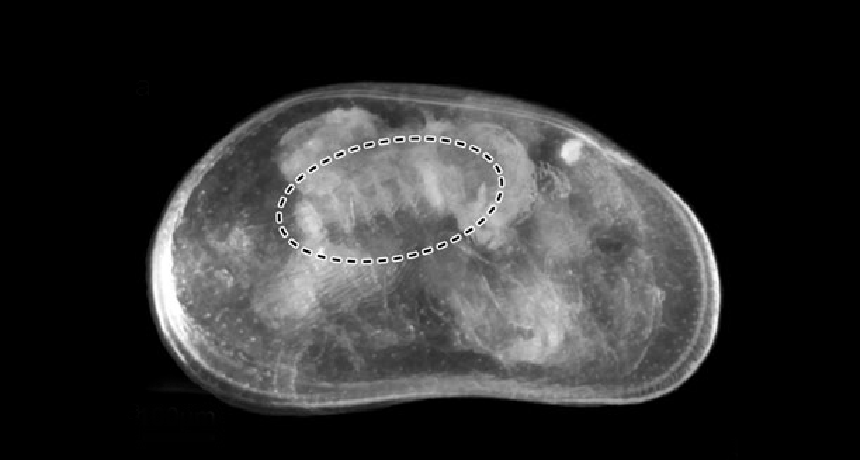Tiny creature, giant sperm

A dotted line shows the site of the sperm-moving structure called a Zenker organ in this microscope view of a Pseudocandona marchica ostracod. This tiny crustacean, a relative of shrimps and crabs, uses the organ to route extralong sperm.
s. Yamada and R. Matz ke-Karasz/Naturwissenschaften 2012